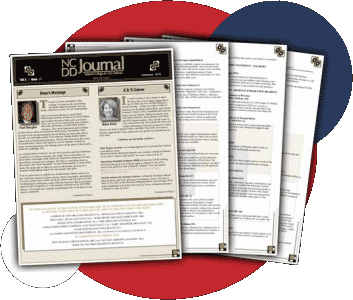DUI Laws in Utah

Important information on Utah DUI Laws.
COMMON ACRONYMS AND TERMS USED TO DESCRIBE DRUNK DRIVING: DUI-driving while under the influence, BUI-boating while under the influence, DUI Metabolite-Driving with any measurable amount of metabolite, Minor Consumption or Possession-Possession or consumption of alcohol by a person under the age of 21 years old.
PROHIBITED VEHICULAR ACTIVITY: drive or in actual physical control
COVERED VEHICLES OR DEVICES: motor vehicle, atv, motorcycle, boat or watercraft
IMPAIRED DRIVING OFFENSES: DUI: 41-6a-502. Driving under the influence of alcohol, drugs, or a combination of both or with specified or unsafe blood alcohol concentration. (1) A person may not operate or be in actual physical control of a vehicle within this state if the person: (a) has sufficient alcohol in the person's body that a subsequent chemical test shows that the person has a blood or breath alcohol concentration of .05 grams or greater at the time of the test; (b) is under the influence of alcohol, any drug, or the combined influence of alcohol and any drug to a degree that renders the person incapable of safely operating a vehicle; or (c) has a blood or breath alcohol concentration of .05 grams or greater at the time of operation or actual physical control. (2) Alcohol concentration in the blood shall be based upon grams of alcohol per 100 milliliters of blood, and alcohol concentration in the breath shall be based upon grams of alcohol per 210 liters of breath. (3) A violation of this section includes a violation under a local ordinance similar to this section adopted in compliance with Section 41-6a-510.
DEGREE OF IMPAIRMENT REQUIRED: DUI Alcohol/drugs: To the degree that renders the person incapable of safely operating a vehicle. ¨Metabolite: No impairment required. The case is proven with any measurable controlled substance or metabolite of a controlled substance in the persons body.
PENALTIES: 41-6a-503. Penalties for driving under the influence violations. (1) A person who violates for the first or second time Section 41-6a-502 is guilty of a: (a) class B misdemeanor; or (b) class A misdemeanor if the person: (i) has also inflicted bodily injury upon another as a proximate result of having operated the vehicle in a negligent manner; (ii) had a passenger under 16 years of age in the vehicle at the time of the offense; or (iii) was 21 years of age or older and had a passenger under 18 years of age in the vehicle at the time of the offense. (2) A person who violates Section 41-6a-502 is guilty of a third degree felony if: (a) the person has also inflicted serious bodily injury upon another as a proximate result of having operated the vehicle in a negligent manner; (b) the person has two or more prior convictions as defined in Subsection 41-6a-501(2), each of which is within ten years of: (i) the current conviction under Section 41-6a-502; or (ii) the commission of the offense upon which the current conviction is based; or (c) the conviction under Section 41-6a-502 is at any time after a conviction of: (i) automobile homicide under Section 76-5-207 that is committed after July 1, 2001; (ii) a felony violation of Section 41-6a-502 or a statute previously in effect in this state that would constitute a violation of Section 41-6a-502 that is committed after July 1, 2001; or (iii) any conviction described in Subsection (2)(c)(i) or (ii) which judgment of conviction is reduced under Section 76-3-402. (3) A person is guilty of a separate offense for each victim suffering bodily injury or serious bodily injury as a result of the person's violation of Section 41-6a-502 or death as a result of the person's violation of Section 76-5-207 whether or not the injuries arise from the same episode of driving. Sentencing: 41-6a-505. Sentencing requirements for driving under the influence of alcohol, drugs, or a combination of both violations. (1) As part of any sentence for a first conviction of Section 41-6a-502: (a) the court shall: (i) (A) impose a jail sentence of not less than 48 consecutive hours; (B) require the person to work in a compensatory-service work program for not less than 48 hours; or (C) require the person to participate in home confinement through the use of electronic monitoring in accordance with Section 41-6a-506; (ii) order the person to participate in a screening; (iii) order the person to participate in an assessment, if it is found appropriate by a screening under Subsection (1)(a)(ii); (iv) order the person to participate in an educational series if the court does not order substance abuse treatment as described under Subsection (1)(b); (v) impose a fine of not less than $700; and (vi) order probation for the person in accordance with Section 41-6a-507, if there is admissible evidence that the person had a blood alcohol level of .16 or higher; and (b) the court may: (i) order the person to obtain substance abuse treatment if the substance abuse treatment program determines that substance abuse treatment is appropriate; or (ii) order probation for the person in accordance with Section 41-6a-507. (2) If a person is convicted under Section 41-6a-502 within ten years of a prior conviction as defined in Subsection 41-6a-501(2): (a) the court shall: (i) (A) impose a jail sentence of not less than 240 consecutive hours; (B) require the person to work in a compensatory-service work program for not less than 240 hours; or (C) require the person to participate in home confinement through the use of electronic monitoring in accordance with Section 41-6a-506; (ii) order the person to participate in a screening; (iii) order the person to participate in an assessment, if it is found appropriate by a screening under Subsection (2)(a)(ii); (iv) order the person to participate in an educational series if the court does not order substance abuse treatment as described under Subsection (2)(b); (v) impose a fine of not less than $800; and (vi) order probation for the person in accordance with Section 41-6a-507; and (b) the court may order the person to obtain substance abuse treatment if the substance abuse treatment program determines that substance abuse treatment is appropriate. (3) Under Subsection 41-6a-503(2), if the court suspends the execution of a prison sentence and places the defendant on probation: (a) the court shall impose: (i) a fine of not less than $1,500; (ii) a jail sentence of not less than 1,500 hours; (iii) supervised probation; and (iv) an order requiring the person to obtain a screening and assessment and substanceabuse treatment at a substance abuse treatment program providing intensive care or inpatient treatment and long-term closely supervised follow-through after treatment for not less than 240 hours; and (b) the court may require the person to participate in home confinement through the use of electronic monitoring in accordance with Section 41-6a-506. (4) (a) The requirements of Subsections (1)(a), (2)(a), and (3)(a) may not be suspended. (b) Probation or parole resulting from a conviction for a violation under this section may not be terminated. (5) If a person is convicted of a violation of Section 41-6a-502 and there is admissible evidence that the person had a blood alcohol level of .16 or higher, the court shall order the following, or describe on record why the order or orders are not appropriate: (a) treatment as described under Subsection (1)(b), (2)(b), or (3)(a)(iv); and� (b) one or both of the following:� (i) the installation of an ignition interlock system as a condition of probation for the person in accordance with Section 41-6a-518; (ii) the imposition of home confinement through the use of electronic monitoring in accordance with Section 41-6a-506.Driver License Suspension:41-6a-509. Driver license suspension or revocation for a driving under the influence violation. (1) (a) The Driver License Division shall: (i) if the person is 21 years of age or older at the time of arrest: (A) suspend for a period of 120 days the operator's license of a person convicted for the first time under Section 41-6a-502 of an offense committed on or after July 1, 2009; and (B) revoke for a period of two years the license of a person if: (I) the person has a prior conviction as defined under Subsection 41-6a-501(2); and (II) the current driving under the influence violation under Section 41-6a-502 is committed: (Aa) within a period of ten years from the date of the prior violation; and (Bb) on or after July 1, 2009; (ii) if the person is under 21 years of age at the time of arrest: (A) suspend the person's driver license until the person is 21 years of age or for a period of 120 days, whichever is longer, if the person is convicted for the first time of a driving under the influence violation under Section 41-6a-502 of an offense that was committed on or after July 1, 2009; (B) deny the person's application for a license or learner's permit until the person is 21 years of age or for a period of 120 days, whichever is longer, if the person: (I) is convicted for the first time of a driving under the influence violation under Section 41-6a-502 of an offense committed on or after July 1, 2009; and (II) has not been issued an operator license;
http://health.utah.gov/lab/toxicology/
http://publicsafety.utah.gov/dld/alcohol_restricted_driver.html




